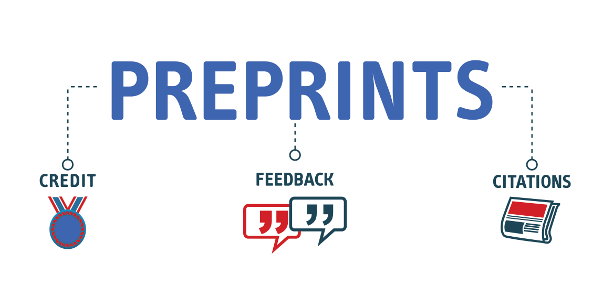It is difficult to publish a research paper since the procedure is slow and can take a long time. Since the research paper must be properly evaluated and analyzed, the process might be delayed for months or even years. Researchers are naturally upset by the amount of time it requires to communicate their research and to enjoy the perks of a published, citation-worthy research publication.
A preprint paper is a material that has been produced for publishing as a journal article but has not yet been peer-reviewed by a journal. Publishing preprints allows the quick dissemination of research findings, which saves the searcher time in learning about previously conducted research that hasn’t yet been published owing to the time-consuming procedure of obtaining journal publication.
This Mind The Graph article will teach you more about preprint papers and how you may benefit from publishing research that has not yet been peer-reviewed for journal publication.
What is preprint paper?
Preprints, also known as Author’s Original Manuscripts (AOM), are versions of your paper that have not yet been sent to a journal for review. A preprint may not be treated with the same esteem as a published journal research paper, but it will be publicly available, cannot be removed from the server, and will almost certainly garner more attention than your published paper.
Even though it is not for publication, you must treat your preprint paper seriously to make a good impression, attract your audience’s attention, and generate interest in your research.
Can preprints be cited?
Remember that all sections must be in good form, and the storytelling structure must make sense and be interesting. Every preprint can get a DOI (Digital Object Identifier) and can be cited.
What are the benefits of preprint paper?

- Speed: preprints are a free and easy method to convey your findings on your own time, without jeopardizing potential future publication.
- Feedback: community feedback may help you improve your work by sparking arguments that lead to new ideas, investigations, and even partnerships with other professionals. As well as refining your work before it goes through the journal’s formal peer-review system.
- Authenticity: the preprint is a public record that your paper was released at the time it was published. Almost sure, your work will be granted a digital object identifier (DOI).
- Visibility: the sooner you make your study public, the sooner you will gain attention and visibility. Other professionals will quickly begin referencing and expanding your work, ensuring maximum reading and citation potential.
- Career: you can kickstart your career by submitting a preprint of your work. Including a publicly available preprint is far more enticing than stating one that is under review or in process.
Tips on preparing your preprint
- Prepare your preprint the same way you would prepare a paper for journal publication: Your preprint will be publicly available and it will attract readers, debates and other colleagues. So do it thoroughly.
- Choose the most appropriate copyright license for your work: When you submit your preprint to a server like bioRxiv or chemRxiv, you retain the rights to the work. You may also specify how much of the work can be reused.
- Share and promote your preprint: Indicate that you welcome feedback and recommendations so that you may enhance your work before submitting it to publication.
Where to publish a preprint paper?
To publish a preprint, you must first locate a preprint server, which is an online repository containing data and information on several papers. When you submit your preprint paper, it is submitted to basic screening and plagiarism detection. Check below a list of open preprint servers:
- BioRxiv: an open-access preprint repository for biological sciences by Cold Spring Harbor Laboratory.
- ASAPbio: similar to BioRxiv, for biological and environmental science.
- ChemRxiv: open access preprint repository for chemical science, operated by the American Chemical Society, the Royal Society of Chemistry, and the German Chemical Society.
- arXiv: a physics, mathematics, computer science, quantitative biology, statistics, electrical engineering, and system sciences preprint repository.
- PeerJ: an open-access multidisciplinary repository.
- The Winnower: a platform for scholarly publishing online. It enables researchers and peers to engage in intellectual debates on the posted scholarly papers.
- PrePubMed: it indexes papers from PeerJ preprints and BioRxiv.
- psyArXiv: an open access repository for psychology, powered by OSFPreprints.
- SocArXiv: open archive repository for social sciences, powered by OSFPreprints.
Communicate science visually with the power of Mind the Graph
Adding graphic assets to your paper is another fantastic method to boost its credibility. To use infographic templates and improve your research, use the Mind The Graph tool.

Subscribe to our newsletter
Exclusive high quality content about effective visual
communication in science.





